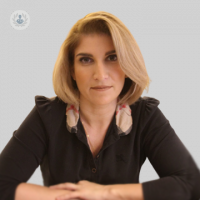A dermatologist's guide to treating acne scars
Escrito por:Dr Firas Al-Niaimi is a highly trained and experienced cosmetic and medical dermatologist, world renowned within the aesthetic industry, and specialising in advanced laser treatments. Here he discusses some of the ways in which acne scarring can be treated.

80% of young people between the ages of 11 and 30 are affected by acne, a common condition which occurs due to triggering changes in hormone activity throughout puberty. Spots then form as a result of oily skin and overactive sebaceous glands (glands which naturally secrete an oily matter called sebum), usually on the face, back and chest. Acne can also be caused through genetics, hormone changes throughout pregnancy, the menopause, smoking and certain medications.
Acne can leave behind scarring when more serious spots, like cysts, burst and damage the surrounding skin. The three main types of acne scar are:
- box scars – round indents or depressions in the skin, which can make it look ‘pitted’
- ice pick scars – deep, narrow scars which look like holes in the skin
- rolling scars – these are broader depressions which have a more rounded edge, and look more like ‘waves’ on the skin
They can be rather unsightly and cause many sufferers to feel a lack or loss in confidence, but there are several treatment options available, which can be tailored to the patient and their needs.
Dermabrasion
In dermabrasion, the top layer of skin is removed by way of a laser or a special wire brush to diminish the appearance of scars, and smooth the skin.
Punch excision
Punch excision, punch elevation and punch grafting are all treatment techniques intended only for the treatment of ice pick or box scars. They generally involve the surgical removal of the scar, and follow with the wound being either closed or plugged with a skin sample taken from elsewhere on the body. Punch elevation is slightly different in that the base of the scar is removed and reattached to the sides, level with the skin.
Subcision
Subcision involves the removal of the upper layer of skin overlying the skin in order to form a pool of blood under the affected area. As the blood clots it helps to form connective tissue, causing the scar to be pushed up level with the rest of the skin surface. It is usually performed to treat rolling scars.
Laser treatment
Mild to moderate scarring can be treated using either ablative or non-ablative laser treatment. Ablative treatment is where a small patch of skin around the scar is removed so that new, smoother skin is formed. Non-ablative treatment refers to the stimulation of new collagen within the skin, which helps to improve the appearance of the skin and repair the damage caused by acne scarring.


